#germany japan model
Text
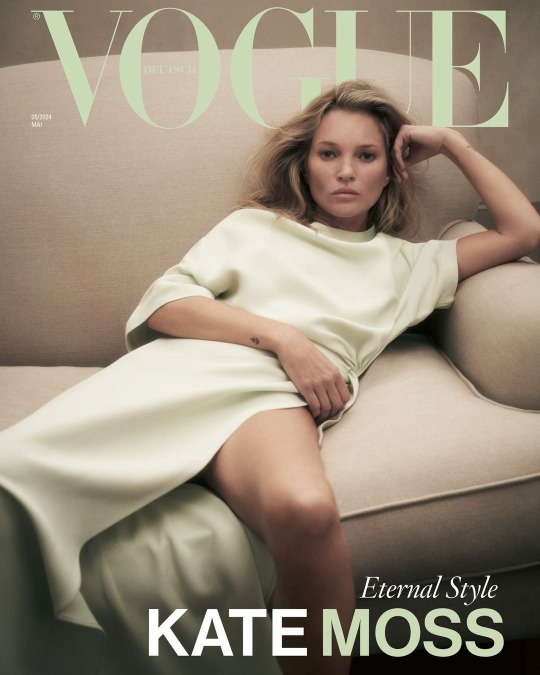

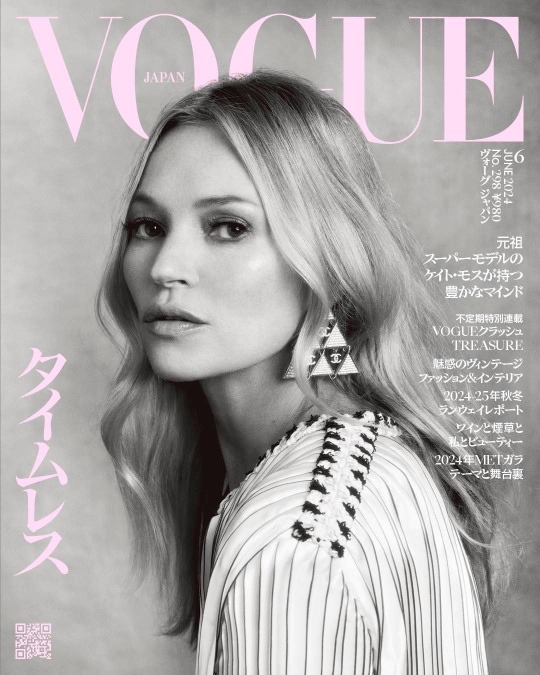
Kate Moss for Vogue Japan, June 2024
Vogue Germany - May 2024
Vogue Taiwan - May 2024
#Kate Moss for Vogue Japan June 2024#fashion#style#model#beauty#kate moss#vogue japan#vogue germany#vogue taiwan#supermodel
2 notes
·
View notes
Text
youtube
#oregon coast#Tillamook Oregon#Tillamook Air Museum#Diorama#scale model#World War II#world war 2#germany#japan#allied forces#Axis of evil#Nazi Germany#u boat#Submarine#Museum#Air Museum#tourism#tourist#my youtube channel#youtube#my youtube video#Walk through#history
0 notes
Text
for 150 followers, I am announcing my big current project - the bachelor, but f1 style.
basically, i was talking to leo about how they should decide the mercedes seat bachelor style, which descended into this.
how it will work:
once i publish a chapter, i will also publish a poll - this poll will be WHO TO ELIMINATE, NOT who stays.
whoever 'wins' that poll will be eliminated and we will continue the remaining contestants
i will publish the first chapter 'soon-ish', so you're not voting off the moodboard, don't worry
the moodboards do have some easter eggs for the future, relying on them not being eliminated.
also yes i fiddled with the ages, deal with it.
so - meet your contestants
y/n y/l/n, 25, f1 driver for aston martin - the bachelor

and the people vying for his heart
kimi raikkonen, 34, financier from finland
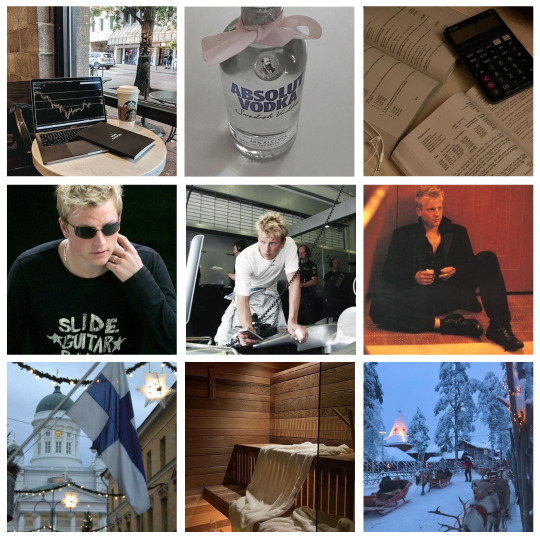
2. logan sargeant, 23, dj from usa

3. daniel ricciardo, 33, photographer from australia

4. alex albon, 27, lawyer from thailand

5. mark webber, 37, bodyguard from australia
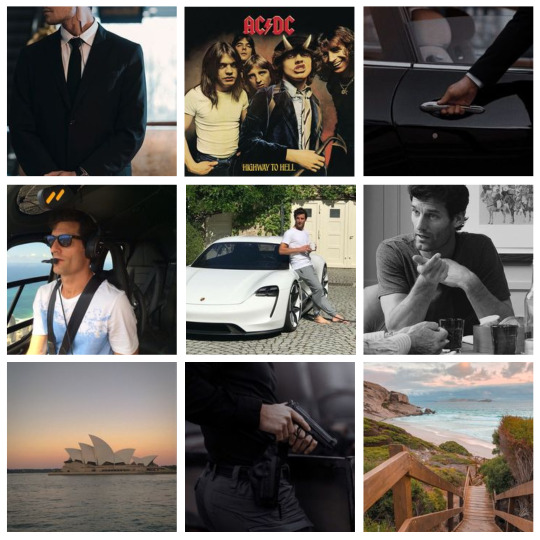
6. liam lawson, 22, firefighter from new zealand

7. fernando alonso, 42, physio from spain

8. esteban ocon, 27, baker from france

9. yuki tsunoda, 23, chef from japan

10. carlos sainz, 29, football player from spain

11. lance stroll, 25, heir from canada

12. max verstappen, 26, cat shelter owner and vet from the netherlands

13. sebastian vettel, 36, florist, conservationist and activist from germany
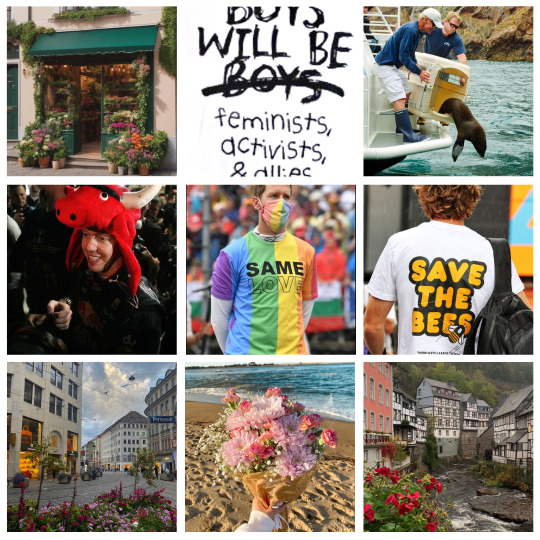
14. oscar piastri, 22, author from australia

15. mick schumacher, 24, surfer from germany

16. nico rosberg, 38, philanthropist from germany
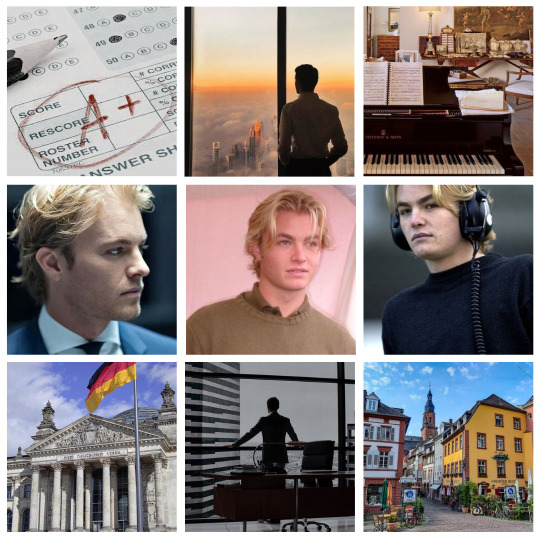
17. arthur leclerc, 24, model from monaco

18. lewis hamilton, 38, model from the uk
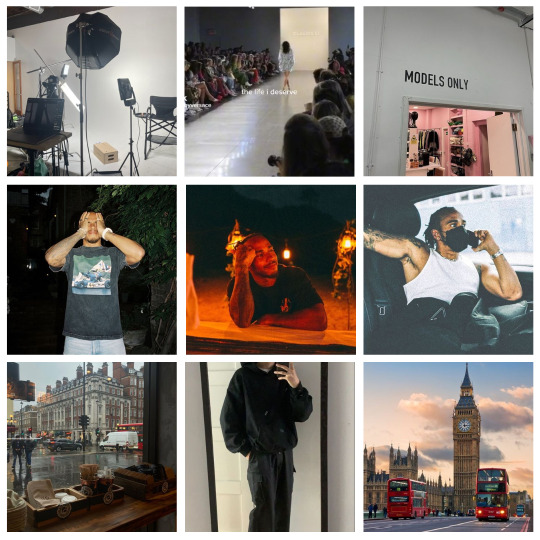
19. george russell, 26, CLASSIFIED from the uk
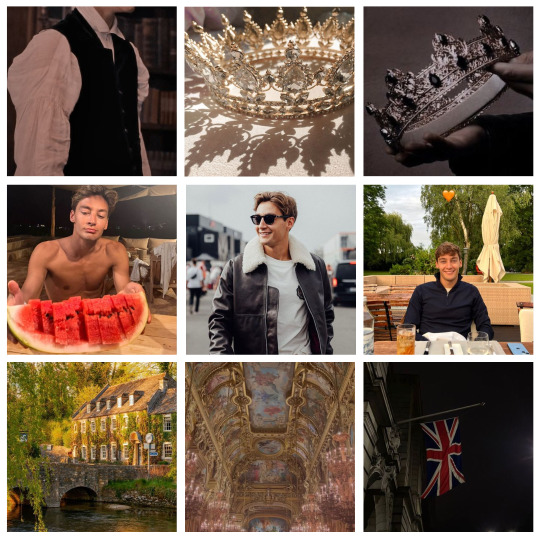
20. jenson button, 34, artist from the uk
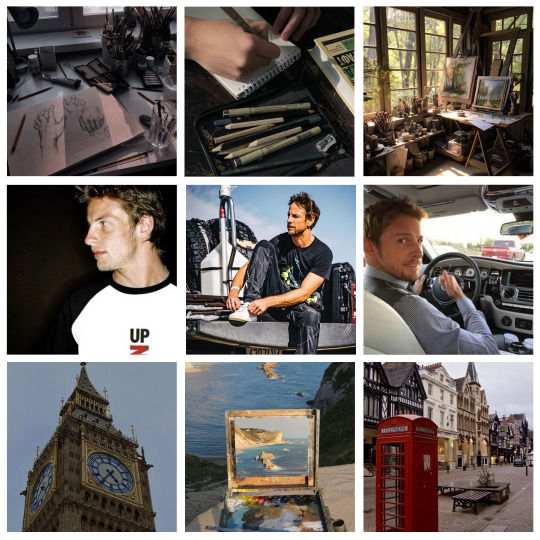
21. charles leclerc, 26, fashion designer from monaco
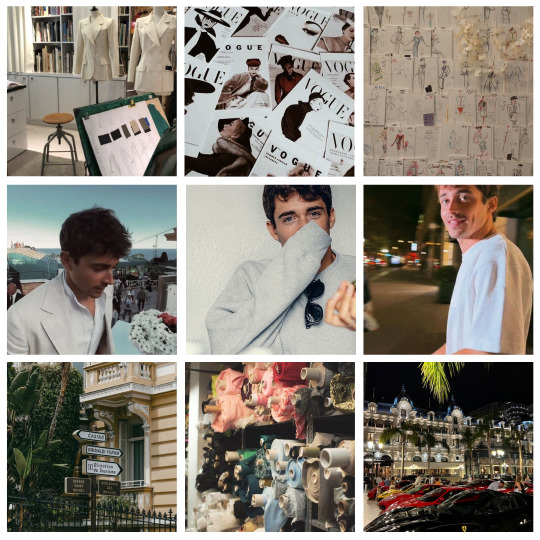
22. pierre gasly, 28, lead singer of a boy band from france

23. lando norris, 24, twitch streamer from the uk

24. toto wolff, 41, ceo billionaire from austria

25. susie wolff, 31, girlboss from scotland

---
taglist of people who i think may be interested in this (but let me know if you want to be added or removed):
@leosxrealm, @tallrock35, @wolf-knights, @janeholt3, @badblondebisexualboy, @ghostking4m
#f1 x reader#miloformula123fan#f1 fanfic#f1 x male reader#milo's bachelor#kimi raikkonen x reader#logan sargeant x reader#daniel ricciardo x reader#alex albon x reader#mark webber x reader#liam lawson x reader#fernando alonso x reader#esteban ocon x reader#yuki tsunoda x reader#carlos sainz x reader#lance stroll x reader#sebastian vettel x reader#oscar piastri x reader#mick schumacher x reader#nico rosberg x reader#arthur leclerc x reader#lewis hamilton x reader#george russell x reader#jenson button x reader#charles leclerc x reader#pierre gasly x reader#lando norris x reader#toto wolff x reader#susie wolff x reader
171 notes
·
View notes
Text
Fascism, it's an oft misunderstood ideological framework, and is often misrepresented by those wishing to mock, or disavow it.
Fascism is a totalitarian political ideology that can be better described as state corporatism, Giovanni Gentile, the father of Fascism, considered Fascism the fulfilment of the Risorgimento ideals, which serve as the basis of Fascism.
Fascism, by definition, and in its foundations was about unifying Italy under one flag, a struggle for unification and liberation from foreign domination, be it financial, physical or political domination.
Quite a lot of people like to think of Hitler's Germany as a Fascist state, it wasn't, it was similar, but the two differed, the similarities can be attributed to the fact the leaders of both nations were both former Socialists, who believed that Socialism was too slow and adhered too much to bourgeois values.
A key concept of the essay The Doctrine of Fascism was that fascism was a rejection of previous models;
"Granted that the nineteenth century was the century of socialism, liberalism, democracy, this does not mean that the twentieth century must also be the century of socialism, liberalism, democracy. Political doctrines pass; nations remain. We are free to believe that this is the century of authority, a century tending to the "right", a Fascist century.
If the nineteenth century was the century of the individual (liberalism implies individualism) we are free to believe that this is the "collective" century, and therefore the century of the State."
Benito Mussolini and Giovanni Gentile co-wrote this essay, and later had it published in the Italian Encyclopedia.
In 1940, Mussolini ordered all remaining copies of the document, which had different editions and translations, to be destroyed, because he changed his mind about certain points, that being his vision of Italy not expanding beyond its borders, and decrying war, he changed his view because he saw the Allies on the decline, and decided he'd rather join the winning side rather than be subsumed into Germany for remaining neutral.
Fascism was, in Italy, an ideology that decried war, expounded the state above the individual, and pushed corporatism, there were no individual rights, only collective rights.
Now, why do I say Hitler's Germany wasn't Fascist? Because beyond the superficial aesthetics, it wasn't, it was still very much Socialist, a Nationalist form of Socialism mind you, rather than the other forms which promoted a Globalist form of Socialism, or, if Hitler's Germany followed National Socialism, the other Socialist states adhered to International Socialism.
Today, academics try with all their might to muddy the waters in an attempt to separate Hitler's Germany from Socialism, and to align it with Fascism, when, if you read what the founders of each political ideology believed and wrote, you'd understand they are only superficially similar, with Hitler's Germany being closer to Imperial Japan and Stalin's Russia in its ideological framework than Italy.
It's why Mein Kampf reads like the Ragged-Trousered Philanthropists, a Socialist propaganda book, though I will add both Mussolini and Hitler loathed Capitalism, which Giovanni Gentile did not, but did see Fascism as the logical evolution of Socialism, so while both Fascism and National Socialism are forms of Socialism, they aren't identical.
Now, don't take this as me defending either, this is just my attempt to air a grievance I've had with people labeling everything they don't like as Fascist.
Such as Starship Troopers and Heinlein, a Libertarian book about a Libertarian utopia fighting space bugs that act as an allegory for Communism, written by a staunch Libertarian.
I think the thing that set me off, was someone on that long thread posted videos by some fat guy on YouTube, in which he invited all of his family on to discuss the novel, and they all take the wrong message from it, but the thing that really did it was his criticism of Heinlein being a military man, and then saying he can talk on it because, despite none of his family being in the Military, him and his brother were in the fucking scouts.
And then he made a long rambling video defending Verhoeven who uses the aesthetic argument of what makes something Fascist, and then uses another person who does the same thing, and I just lost it.
He even brought up the fact Neil Patrick Harris' character comes on to the screen at the end in a "Fascist" uniform, and goes "this is where Verhoeven said he lost the audience, because this scene beats them over the skull with the fact the Federation is Fascist!"

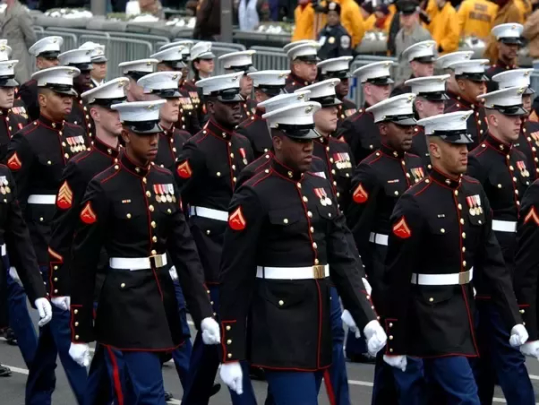
And I'm just fucking frothing at the mouth, these people really don't understand Fascism beyond the basic aesthetics of it, clean, in shape soldiers, chiseled jaws, full hair, clean cuts, he even lists these as if they're evidence, as if these aren't the features every society since the beginning of time has looked for in its soldier or warrior caste, no I guess being physically fit and ready to serve makes you a fucking Fascist to that butter ball of a man.
And God forbid your army has a Fashion sense, some troglodyte will come after it saying it's Fascist, and God forbid you use black or grey in your clothing, ooh, it's gonna activate some almonds.
Fucking morons, can't read past the surface level of anything they encounter.
201 notes
·
View notes
Note
I feel kinda stupid now that I've taken some intensive fiction writing/creative writing classes. I've always liked writing but more as a hobby. I have absolutely no interest in being traditionally published, so creative fiction writing seemed like something cool to do when given the opportunities. By far, I think i learned the most from my children's creative fiction writing classes (took three). The most important thing I think more people online could learn is that your favorite authors to love and hate are just normal people, and they're often bound by the constraints of their audience (and publishers, agents, etc). A lot of children's fiction writers, I think, want to tell good, entertaining stories for kids and want to introduce them to complex topics, especially (from experience) fantasy children's authors. However, when you have a word count or other constraint, how do you go about explaining real-life problems in a fantasy setting? The easiest and most common method is to use imagery of real-world events and problems that are, or will be (once they learn it in school) more commonly understood as Bad and Oppression. Fantasy sub-species or gender is oppressed in fantasy setting?--model it after the Magdelene Laundries. Fantasy race is opressed by society?--model it after Jim Crow or Nazi Germany or anti-Christian isolationist practices in Japan. Is the author saying these events were good? Absolutely not; quite the opposite. Though, it's much easier for kids to understand difficult topics when it's spoonfed to them, and in order to criticize fascism in stories or settings, you have to, you know, depict it first.
This was something I was missing in my media analysis about 4-5 years ago. Just because I'm adult, I forgot the adult writer(s) were writing for kids (or young adults). Makes me feel really dumb for jumping on the "Steven Universe, Voltron, AoT, insert random fantasy YA book encourages fascism/racism/oppression/etc bandwagons."
--
People tend to forget that just because they like media, it doesn't mean that media is for them.
That often gets lost in the rush to defend oneself against "LOL, you read YA as an adult!" or "All anime is for kids, har har" type jeering.
Granted, one hopes most YA titles will be more morally complex than things for 5-year-olds, and some anime is for adults, but...
55 notes
·
View notes
Note
Wait you said you are a fan fic writer? Can you show us your work?
ooh, i've never published my work anywhere but i like to casually write about the fandoms i'm in. i haven't really written anything romantic (besides that time i wrote headcanons about what leon kennedy would be like in a relationship), but i'd be open to receiving imagine/reaction/headcanon requests if my followers wanted that! anyways, since hetalia is the main thing on my blog right now, here we go!
Axis + Allies Physical Appearance Headcanons
SFW, no content warnings at all.
Italy is handsome but he's so stupid that his stupidity overshadows his looks and people often don't even realize he looks good. He does think he is handsome, and takes great care of himself. I feel like he thinks like this, "Well, being pretty is one of the few things I can do, so I might as well be good at it!"
Japan looks nice! He's very hygienic and always makes sure to take care of his skin. He blushes easily. His hair partially covers his ears on purpose because his ears get red pretty often. He has quite a few moles and a few crooked teeth. His fingertips are rather red.
Germany looks alright but he's so uptight/scary that people just do not want to hit on him. His hands are very calloused. Also one who is very hygienic and takes care of himself a lot. He has quite a bit of body hair, but since it's a very light blond and not very visible, he doesn't bother with it. Nice straight teeth, but his canines are rather prominent.
Russia is cute! I actually think that people do not see his face very often because it's obscured by his scarf, and/or people are too scared to look him straight in the eyes (LOL). Also the issue of looking up to even see his face. He's usually naturally blushing even if just a little bit. Also his ears are kinda big. Gets bashful if you compliment the man himself, because he doesn't think of himself as particularly attractive, and will instead divert the conversation to, "A-Ah yes, Russia has many beautiful sights and landscapes!"
China is pretty!! He has wild eyebrows and lots of sun spots, freckles, and moles. He has a bad habit of leaving his lips dry though, LOL. Takes a lot of pride in being attractive. He is VERY good at doing makeup.
America doesn't care about his appearance much other than his hair, but he just tends to naturally look good. He hes a very boyish vibe. His glasses are always covered in fingerprints but he always forgets to clean them so he doesn't even bother anymore. He's learned to just ignore the dust LOL. I also think he has perfect teeth, like a good ol' Hollywood smile.
Canada is the prettiest out of the allies! People just don't notice because.. y'know. Canada tends to put a lot of care into his appearance in case someone does notice him, like having better posture, wearing nice, clean, ironed clothes all the time, and just having better self-care habits than America does. Though sometimes he forgets to shave or comb his hair LOL.
England is attractive but in a sorta unkempt scrunkly way. His teeth are crooked, and he has sanpaku eyes. His feathers get quite ruffled if someone brings up appearances, because... Not the best climate in England, and there's the whole British people meme LOL. But, the one thing he's got going for him is he's INCREDIBLY photogenic. I'd say he photographs the best besides China. He's great at modeling, and excels when it's for more punk photography.
France is just stereotypically good-looking LOL. He cares the most about his appearance, but since he's relied so much on just looking naturally good, he has a bit of a hygiene problem.. But hey, at least he's got the best closet out of anyone here– Ah, nevermind, China's got him beat there..
#aph italy#hws italy#aph germany#hws germany#aph japan#hws japan#aph america#hws america#aph russia#hws russia#aph canada#hws canada#aph china#hws china#aph england#hws england#aph france#hws france#hetalia#hetalia headcanons#hetalia x reader#hetalia imagines#hetalia reactions#🛁#asks
67 notes
·
View notes
Text
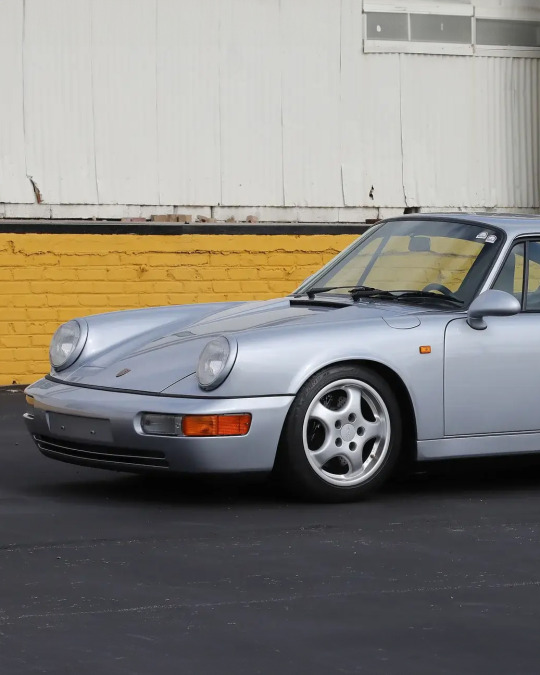
1992 PORSCHE 964 CARRERA RS

1992 PORSCHE 964 CARRERA RS
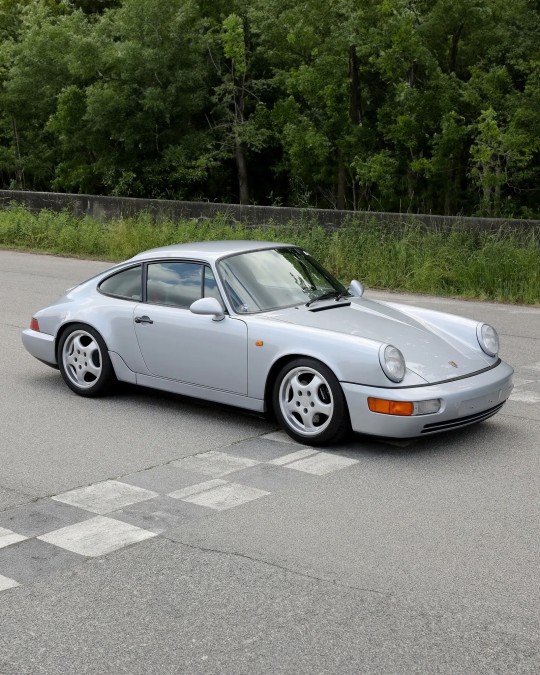
1992 PORSCHE 964 CARRERA RS

1992 PORSCHE 964 CARRERA RS

1992 PORSCHE 964 CARRERA RS

1992 PORSCHE 964 CARRERA RS

1992 PORSCHE 964 CARRERA RS

1992 PORSCHE 964 CARRERA RS
One of the most celebrated models in Porsche’s racebred “RS” lineage, the 964 Carrera RS was produced exclusively for the European/RoW markets featuring a special seam-welded bodyshell, a minimal lightweight interior, shorter gear ratios, unassisted steering, lowered suspension, magnesium wheels, and a more powerful 3.6-liter flat-six engine. This 1992 example was sold new in Japan finished in Polar Silver Metallic over a black interior with tri-tone leather Recaro bucket seats. The car was relocated to Germany in 2013 and was imported to the U.S. by the seller in 2023. Benefitting from a major service within the last year including valve adjustments, new spark plugs, and rebuilt brake calipers, this 964 Carrera RS is now being offered for auction on PCARMARKET with 41,684 kilometers (25,901 miles) showing on the odometer.
28 notes
·
View notes
Text
Liquor headcanons, in order of best to worst tolerance, for the Hetalia main cast:
America: Never gets drunk, ever. His super strength makes it that alcohol simply doesn’t affect him. Guy can chug absinthe like water and wake up the next day with a sunny smile. USA #1!! 🇺🇸🇺🇸🇺🇸🦅🦅🦅😍⭐️⭐️⭐️✨ Because of his sweet tooth, he doesn’t bother with alcohol much, preferring soda and milkshakes instead. If he had to pick a favourite, it would be one of the cheap, popular American beers like budweiser. Always drunk from one of those cliche college red cups, natch!
Russia: Ridiculously strong tolerance. He is the land of vodka after all. Plus his sheer size (both in map area and as a man) gives him a huge edge in drinking. Only America and his cheat code metabolism can beat him. Everyone else is just plain doomed. Favourite drink is vodka (duh)
Canada: A dark horse! Canada takes after his papa France - the wine connoisseur of the world - but his height and huge map size gives him an edge in the tolerance game even beyond that. Favourite drink is anything maple flavoured, but especially beer
France: A lover of fine wines! Francy-pants can hold his liquor like a champ. Also his natural grace and poise make him seem less drunk than he is. Even wasted, the guy can walk in a straight line like a model on a catwalk. Has many favourites because the alcohol from his place is just so good! How can he possibly pick just one?
Italy: Another wine lover! Italy is a step down from France, but still puts up strong competition. All the carbs he eats play a big role. And he acts drunk a lot of the time anyway so pinpointing when he gets smashed is hard lol. Favourite drink is whichever wine pairs best with the delicious Italian meal he’s eating. Just never give him beer 🤮
China: Mid-tier. His long life has let him grow a better tolerance than some nations, but his slight build and tendency to flush comes back to bite him. Favourite drink is beer when he wants to relax, and baijiu when he’s feeling more traditional
Germany: Surprisingly low on the list for a man of his size. Mostly because he’s one of the youngest nations and so hasn’t had time to build up a good tolerance to alcohol. Also he mainly drinks beer so harder stuff tends to crater him. Favourite drink? Beer, beer, more beer 🍻
Japan: Very bad. His small frame and vulnerability to alcohol flush means only a glass or two goes straight to his head. Then he turns scarlet and falls asleep on someone. Favourite drink is sake while at home, beer while travelling
England: Dead last. Embarrassingly bad, especially for an ex-pirate! How is he so bad? No one knows. Favourite drink is anything
#hetalia#hws america#hws russia#hws canada#hws france#hws italy#hws china#hws germany#hws japan#hws england#aph america#aph france#aph england#aph germany#aph china#aph italy#aph russia#aph japan#my posts#aph canada
41 notes
·
View notes
Text
Amestris Military Real world Influence
This is the third of my series of long posts about the Amestrian Military. This is the post for the history nerds. There are plenty of real world references in Fullmetal Alchemist, especially pertaining to the first half of the 20th century. While Amestris and its military have often been compared to Nazi Germany (especially when it comes to the anime), the references in the manga are very diverse. Disclaimer, this is by no means an exhaustive list, there are too many for me to cover in one post, and I'm not a historian. So let me know if there's any reference I might have missed or if I got something wrong!
To see the rest of this meta series check out the Main Post..
Names
Probably the easiest reference to the real world is in the names of the military personnel. Almost all of them are named after military vehicles and equipment, mainly from World War II. Some examples:
Roy Mustang — P-51 Mustang (USA WW2 aircraft)
Riza Hawkeye & Grumman — Northrop Hawkeye E-2 Grumman (USA 60s aircraft)
Maes Hughes — Hughes aircraft series (USA aircraft company)
Black Hayate — Nakajima Ki-84 Hayate (Japanese WW2 aircraft)
Jean Havoc & Henry Douglas— Douglas A-20 Havoc (USA WW2 aircraft)
Heymans Breda — Breda M37 (Italy WW2 Machine gun) or HMS Breda (UK WW2 Yacht)
Kain Fuery — Hawker Fury (UK 30s aircraft)
Vato Falman — Farman aircrafts series (French aircraft company)
Armstrong Family — Armstrong Whitworth Whitley (UK WW2 aircraft)
Weapons and equipment
The weapons used by the military are also based on real world weaponry. Arakawa herself admitted to using references for weapons as well as for the vehicles.[1] Not all of them are a direct copy of a historical weapon, but all of them are at least inspired by one or more of them.
Pistol — Colt M1911A1 (USA 1924)
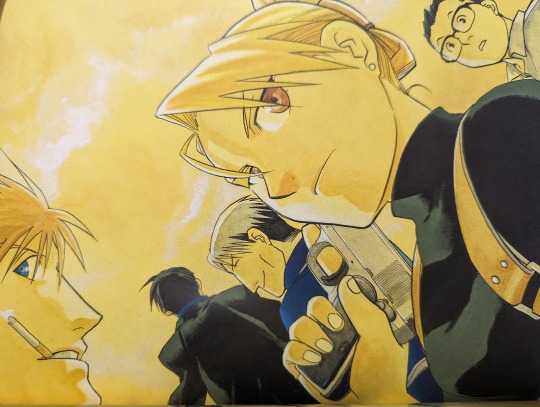
Hawkeye's pistol. [1]
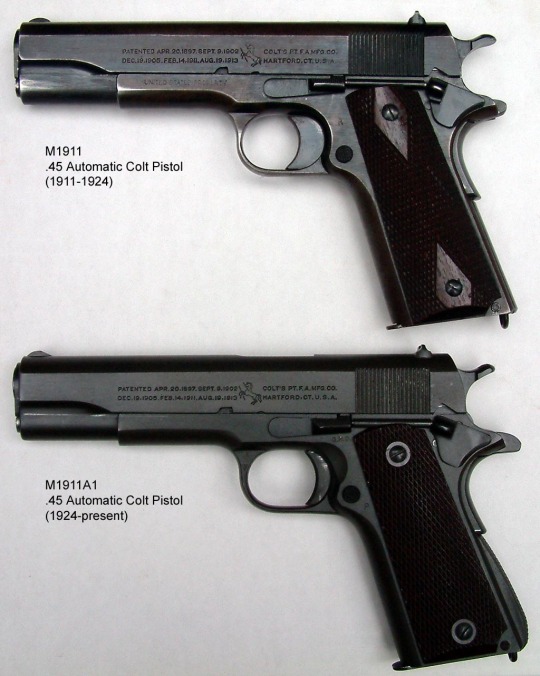
Colt M1911 & M1911A
Rifle — Mauser Karabiner 98k (Germany WW2)
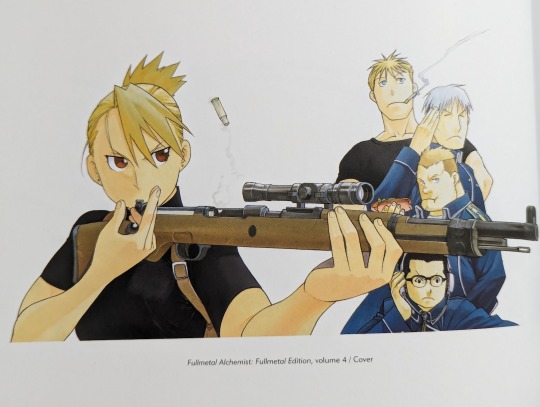
Hawkeye's Rifle. [1]
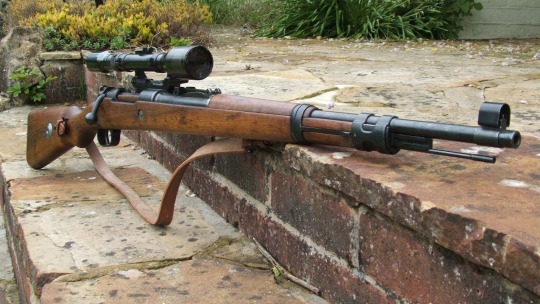
Mauser Karabiner 98k rifle
Hand grenade — Stielhandgranate M24 aka the potato mashers (Germany WW2)
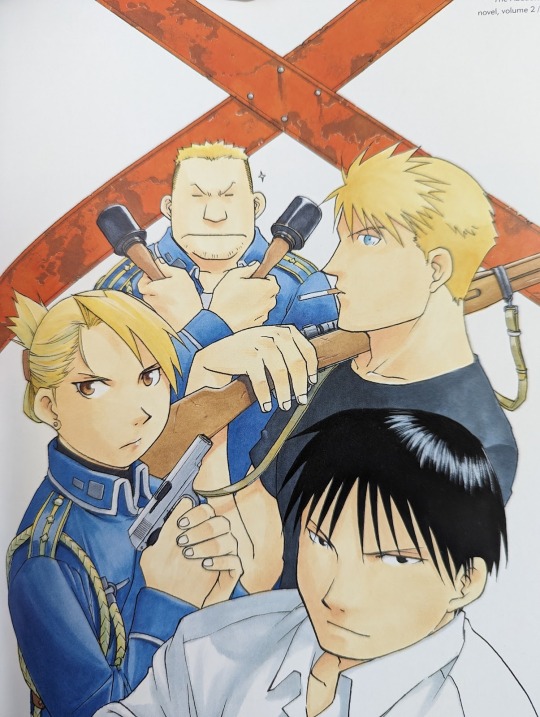
Team Mustang's and their weapons. [1]

Stielhandgranate M24
Briggs' Tank
The Briggs' tank isn’t modeled directly after any specific tank, and rather takes inspiration from different WW1 to WW2 tanks. The manga and Brotherhood tanks take after different inspirations, with Brotherhood being more German coded than the manga tank. There's an excellent article in the tanks encyclopedia analyzing the Fullmetal Alchemist tanks if anyone's interested.
Military Cars —
We see a few military cars throughout the story. Once again the cars we see in the manga and Brotherhood are quite different, and they appear to be based on models from the late 1910s to the late 1930s.
The manga’s standard issued military car looks at least partially inspired by the American Ford model A of 1927.

Mustang's military car(manga).[2]

1927 Ford model A.
The Brotherhood art sketches have two different drawings of military cars. The first one, the one we see Mustang use, is based on the French Citroën traction avant 11CV of 1935.

Fullmetal Alchemist Brotherhood military vehicle version 1.

1935 French Citroën traction avant 11CV.
The second car seems to be inspired by the Italian Fiat Tipo 5 of the 1910s. Perhaps even inspired by one of the American made Fiat models.

Fullmetal Alchemist Brotherhood military vehicle version 2.

Fiat tipo 55.
Ranks and insignias
With the exception of the Führer-President, the Amestrian military ranks appear to be a mix of the USA WW2 officer ranks:
General,
Lt. General,
Major General,
Brigadier General,
Colonel,
Lt. Colonel,
Major,
Captain,
1st Lieutenant,
2nd lieutenant;
As well as the Imperial Japan NCO ranks:
Warrant officer (Special Sergeant Major),
Master Sergeant,
Sergeant,
Corporal.
The history of the Imperial Japan Warrant Officer rank is a bit confusing and complicated. In the 79 years that the Empire lasted, the Warrant Officer rank saw a lot of changes, being its own category at times, a Senior NCO at others. The NCO Warrant Officers seem to have been specialized Sergeant Majors (also translated as Master Sergeant) that basically functioned as the most senior of the NCO ranks. Aside from this the one modern country, I could find, that has Warrant Officers as NCO is Malaysia.
The rank of Führer-President (大総統 - Daisōtō in Japanese) replaces the rank of General of the army in the USA officer classification. While the English translation is a direct reference to Nazi Germany, the Japanese word is a lot more nuanced.
The word Daisōtō actually refers to the president of the 1912-1924 Republic of China, and if you Google it, all you will get is images of Bradley himself. The term used for “Führer” is 総統 (Sōtō), without the 大 (Dai) which is instead used in the word president 大統領 (Daitōryō), this is probably the inspiration for the Führer-president title of the official English translation.
However, Sōtō isn't used to refer just to Nazi Germany's Führer, but rather to any fascist associated head of state. As such Germany's Sōtō is the Fuhrer, but Italy's Sōtō is the Duce (Mussolini).
The effect is technically the same (you still think of Hitler and fascism), but the Japanese word is not a direct translation of Führer, nor a direct reference to Nazi Germany, it's more subtle than the English translation. I imagine Führer was used in English (in absence of a more subtle unifying word) as it is more recognizable to the English speaker than other fascist titles like: Duce, Caudillo, Generalísimo, etc.
The WW2 imperial Japan ranks also included superior private, first class private, and second class private, but they were their own class, called soldiers, below the NCO ranks, and were mainly composed of men serving their conscripted time. This might explain their absence in the Amestrian official ranks as Amestris doesn't seem to have conscription.
The rank insignias themselves are pretty much a copy of the imperial Japan ones.
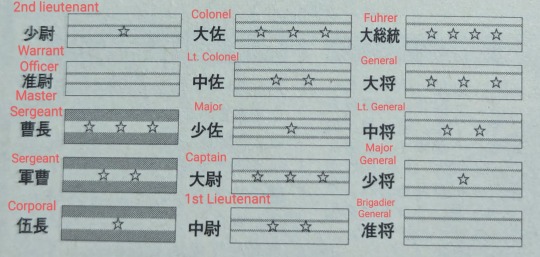
Amestris rank insignias.[3]
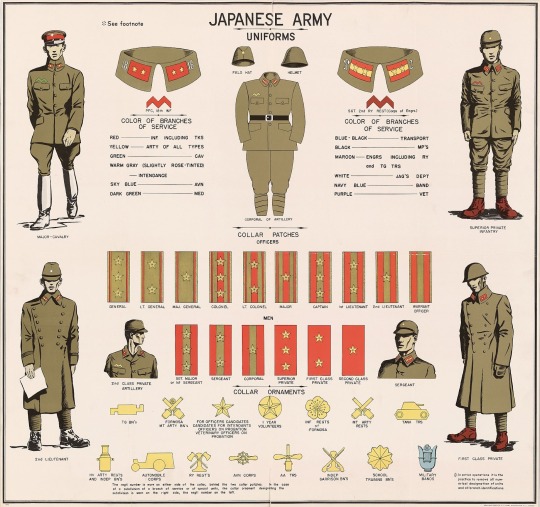
Imperial Japan ranks insignias.
Uniform
In terms of the uniform there's not one single reference or perfect match for the design, but the closest to it is probably the WW1 French infantry uniform.

Amestris military uniform. [1]
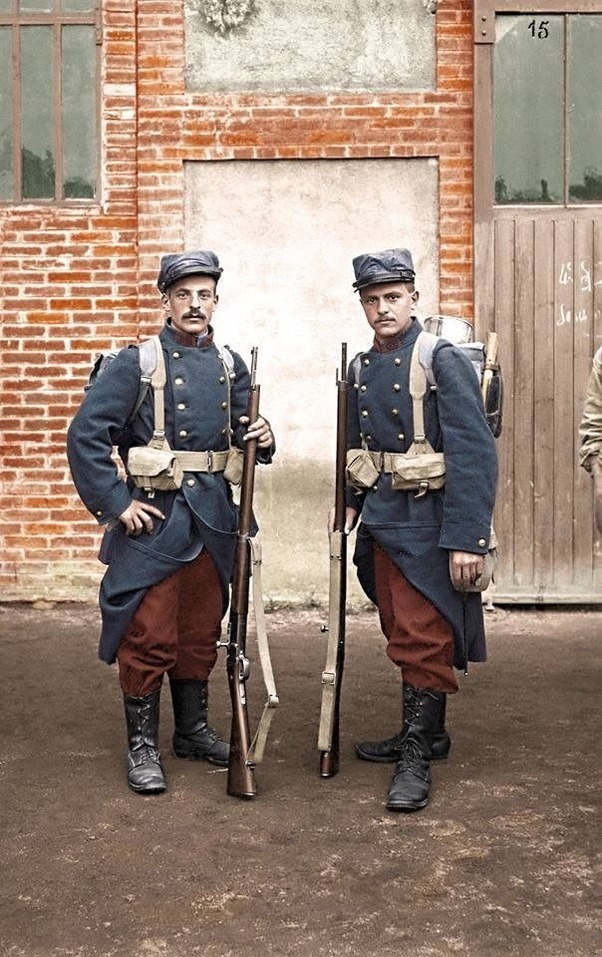
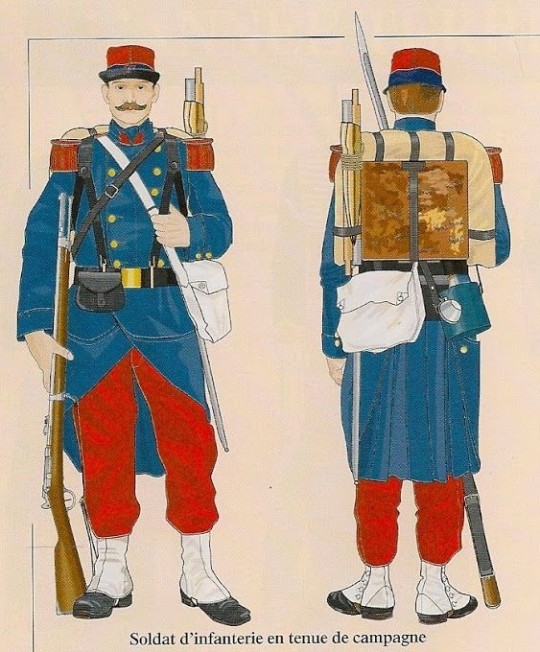
Early WW1 French uniform

Late WW1 French uniform
Aside from the color of the French uniform, the long skirt, flaps and boots are very similar to the Amestrian uniform.
The Amestrian short jacket itself seems to be inspired by the WW2 USA Ike jacket.

USA WW2 Ike jacket.
Furthermore the white lining of the Amestrian uniform reminds me of the Imperial Japan formal uniform jacket, which is itself Prussian and French inspired.
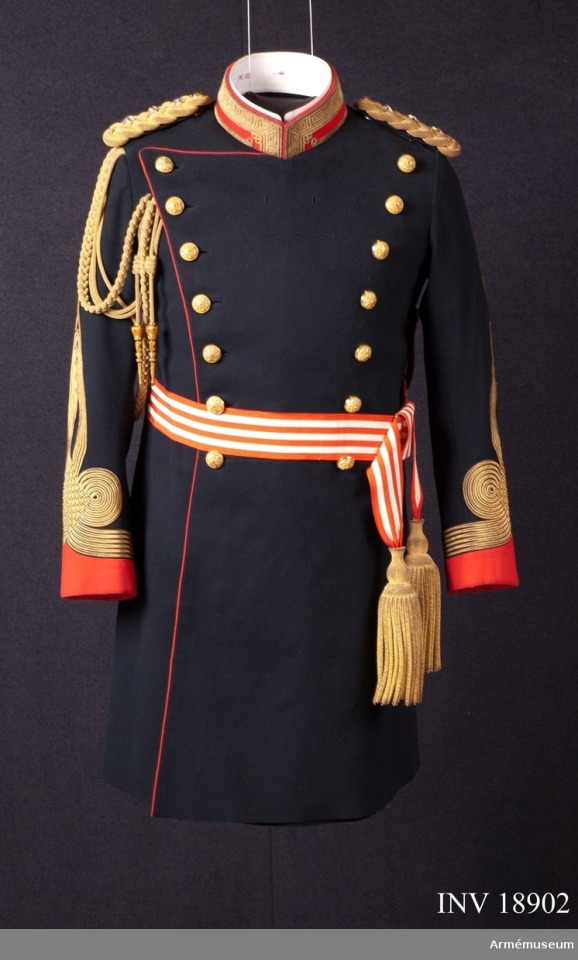
Imperial Japan Major General formal uniform.
The Briggs uniform is very much WWII winter gear inspired.
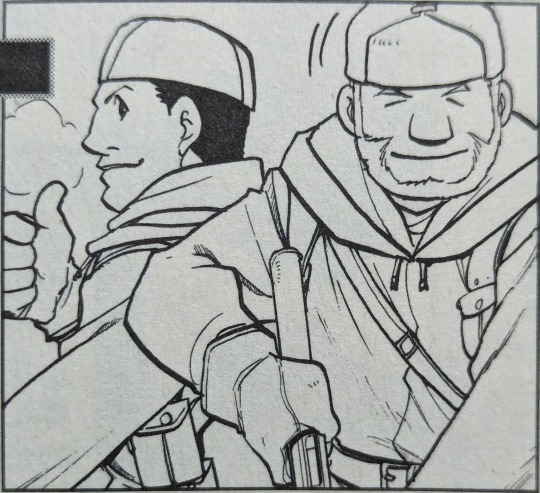
Briggs uniform.[3]
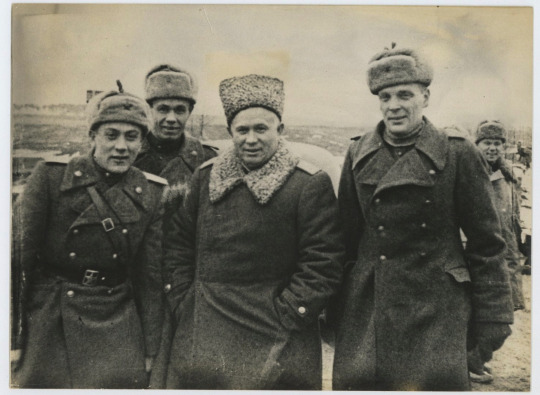
Soviet WW2 winter uniform

Finnish WWII sniper.
Out of every uniform variation, the one most German coded is, to no one's surprise, the Führer-president’s. His trench coat looks similar to the WW1 Prussian one.

Bradley in uniform.
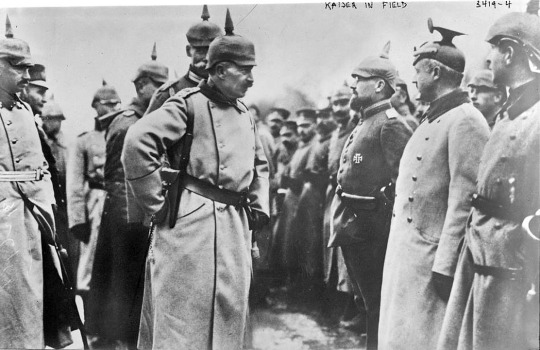
WW1 Prussian soldiers.
In general the uniform has a very World War I vibe to it, down to the impractical, decorative parts of it like the skirt. This is an uniform that obviously predates modern warfare, very apt for the time period the story is “set on”. This makes an interesting contrast with the weaponry which seem to be mostly World War II inspired.
Other references
Ishval war of extermination
First of all trigger warning for genocide and human experimentation. Just skip this section if you're sensible to these topics.
Just like the Ishvalan are an amalgamation of many cultures and ethnicity, the Ishvalan civil war seems to reference multiple conflicts and events.
Plenty of comparisons have been made with the Jewish genocide in the hands of the Nazi (and the 03 anime leans especially hard on this). There are also similarities with the Herero war and genocide at the hand of the German empire which just like the Ishval Civil war ended in 1908. Another possible reference is the Armenian genocide at the hands of the Ottoman empire, which also involved a minority living at the border of a nation the country was at war with and being suspected of colluding with the enemy. Both the Armenian and the Ishvalan soldiers serving in the army were dismissed, incarcerated, and eventually executed.
Another more clear cut reference made in the Ishval civil war is Mustang's and Knox’s experimentation. This would be a reference to the horrendous experiments done by both the Nazi and Japan's infamous unit 731. Both which included burning people to test treatments and the limits of the human body.
I am sorry to end up on such a hard note, but I think it's best we move on to other — less traumatic — topics.
Source
Fullmetal Alchemist Manga
Chapter 38: a counter attack signal [2]
The Complete art of Fullmetal Alchemist [1]
Fullmetal Alchemist perfect guide 3 [3]
Training Regime post
28 notes
·
View notes
Text
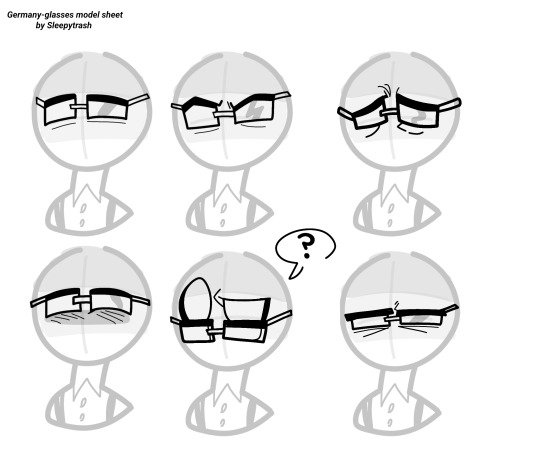

Model sheets I made along Japan
Note: Germany only wears glasses when looking at a computer screen or writing, Why? Because yep
#drawing#countryhumans#countryhumans art#digital art#digital drawing#artists on tumblr#artwork#art#digital aritst#character design#design#character art#digital character#concept art#character concept
20 notes
·
View notes
Text
Trump Was Good for America’s Alliances
He pushed NATO to spend more on defense, expanded the Quad and facilitated the Abraham Accords.
By Alexander B. Gray
Wall Street Journal
April 3, 2024
Foreign-policy experts are predictably fretting over Donald Trump’s re-election campaign. They fear that the former president threatens the alliances and partnerships that have sustained global peace since 1945. Should Mr. Trump return to the White House, the thinking goes, he will be unconstrained by the guardrails that prevented him from torpedoing America’s alliances in his first term and will permanently damage both U.S. security and the international order.
This narrative concedes a point that undermines its premise: The U.S. alliance system didn’t crumble during Mr. Trump’s first term. On the contrary, the Trump administration strengthened relations with partners in the Indo-Pacific, Central and Eastern Europe and the Mideast. Anyone who believes that Mr. Trump was once bound by conventional wisdom but won’t be again—and will wreak havoc on the global order he ostensibly detests—hasn’t been paying attention.
To understand Mr. Trump’s record, recall what he inherited. The Obama administration’s disastrous “red line” in Syria, its ill-conceived Iranian nuclear deal, its failure to deter or respond adequately to Russia’s 2014 aggression against Ukraine, its toleration of Chinese malign activity in the South and East China seas, and its promise of a “new model of great-power relations” with Beijing had brought U.S. relations with allies and partners like Japan, Taiwan, Israel, the Gulf Arab states and much of Eastern Europe to a historic low point. Much of Mr. Trump’s tenure was spent not simply repairing those relationships but expanding them in innovative ways.
Mr. Trump appalled many foreign-policy veterans, who thought his rhetoric threatened the world order. In one sense, that fear was absurd: Nearly every American administration has publicly scolded North Atlantic Treaty Organization member countries for shirking their defense-spending commitments. Mr. Trump did likewise—and, perhaps unlike his predecessors, was seen as willing to take decisive action to secure change. Through public and private cajoling—also known as diplomacy—he secured a commitment from NATO members to beef up their contributions. From 2017 through 2021, nearly every signatory raised defense spending, contributing substantially to the alliance’s ability to respond to Russia’s invasion of Ukraine in 2022.
These efforts resulted in a significant redistribution of U.S. forces from legacy bases in Germany to facilities in Poland and the Baltic states, where they are far better positioned to deter Moscow. Along with NATO allies, Mr. Trump provided long-sought Javelin antitank missiles to Ukraine, imposed sanctions against malign Russian actors, and worked with partners to stop the Nord Stream 2 pipeline, which would have increased European allies’ energy dependence on Russia. These weren’t the acts of a retrograde isolationist; they were the work of a pragmatist seeking novel solutions to 21st-century challenges.
The administration’s goal of strengthening America’s standing in the world bore fruit, including the Abraham Accords between Israel and several Arab states, a significant upgrade to the Quad alliance among the U.S., India, Australia and Japan, stronger diplomatic relations with Taiwan thanks to unprecedented cabinet-level visits and record arms sales, and an unexpected deal between Serbia and Kosovo.
At each step, Mr. Trump asked his staff to think of creative ways to resolve issues that had bedeviled their predecessors for decades. Doing the same things over and over and expecting different results rightly struck the president as insane.
After three years of press adulation over America’s supposed return to the world stage under President Biden, one might ask: What have Americans and the world gotten from a supposedly more alliance-friendly U.S. president? So far, a catastrophic withdrawal from Afghanistan, the failure of American deterrence in Ukraine, an Iranian nuclear breakout inching ever closer, and an accelerating Chinese threat toward Taiwan. Allies in the Mideast, Eastern Europe, and Asia have begun to chart their own course in the face of an uncertain U.S. trumpet.
The global foreign-policy elite is sowing needless fear around the world by willfully misrepresenting Mr. Trump’s first term and scare-mongering about a second. Should Mr. Trump return to the White House, there will doubtless be sighs of relief among officials in friendly capitals who remember his time in office. It isn’t difficult to understand why: Mr. Trump’s language may make diplomats uncomfortable, but his actions strike fear among those who matter most to American security: our adversaries.
Mr. Gray is a senior fellow at the American Foreign Policy Council. He served as chief of staff of the White House National Security Council, 2019-21.
16 notes
·
View notes
Text

002. CHOUKA AIKAWA … ˗ˏˋ ꒰ ♡ ꒱ ˎˊ˗
CHOUKA AIKAWA is a soloist under Republic Records, Flowerbank Entertainment, and Avex Trax. Starting out as a fashion blogger, YouTuber, former ballerina, and socialite in 2017, Chouka branched into acting in 2019, and finally made her way into the music industry in 2024. In addition to becoming a prominent fashion influencer, she has also become a prominent singer, with her debut single “Girls Don’t Cry” going on to become a chart topper.

BASICS … ˗ˏˋ ꒰ ♡ ꒱ ˎˊ˗
BIRTH NAME … Aikawa Chouka
ENGLISH NAME … Love Rose Antoinette Aikawa
KOREAN NAME … Soo Sa-rang (수사랑)
NICKNAMES … Rosie, Marie Antoinette, Cupid, Ai-chan
BIRTHDAY … March 14th, 1999
ZODIAC … Pisces
BIRTHPLACE … Milan, Italy
HOMETOWN … Milan, Italy + Kyoto, Japan + Aoyama, Tokyo, Japan + Paris, France + Berlin, Germany + Amsterdam, Netherlands + Marina Bay Sands, Singapore
ETHNICITY … Japanese
NATIONALITY … Italian-Japanese-American
SEXUALITY … Pansexual
PHYSICAL … ˗ˏˋ ꒰ ♡ ꒱ ˎˊ˗
HEIGHT … 5’7” 1/2 (171 cm)
WEIGHT … 119 lbs (53 kg)
BLOOD TYPE … O
PIERCINGS … N/A
TATTOOS …
꒰ ♡ ꒱ “Ti amerò per sempre” + located on left shoulder blade + shares with fiancé
꒰ ♡ ꒱ A rose encased in glass + located on left shoulder
CLAIMS … ˗ˏˋ ꒰ ♡ ꒱ ˎˊ˗
FACE CLAIM … Minatozaki Sana (TWICE)
VOICE CLAIM … Ariana Grande (English) + YooA (Korean / OH MY GIRL)
DANCE CLAIM … Sunmi (soloist / ex-Wonder Girls)
CAREER … ˗ˏˋ ꒰ ♡ ꒱ ˎˊ˗
COMPANY … Republic Records + Avex Trax + Flowerbank Entertainment + Wilhelmina Models + Creative Artists Agency
OCCUPATION … Singer-songwriter, social media influencer, actress, TV personality, businesswoman, model, former ballet dancer
DEBUT DATE … April 5th, 2024
TRAINEE YEARS … N/A
YEARS ACTIVE … 2024–present
SURVIVAL SHOWS … N/A
FANDOM NAME … Rosettes (로제트 + ロゼット)
COLORS … #FFA3B9 + #FFFFFF
BACKGROUND … ˗ˏˋ ꒰ ♡ ꒱ ˎˊ˗
⋆ ˚。⋆୨୧˚ 🩰 … ONE. IF I WAS A RICH GIRL
Aikawa Chouka was born on March 14th, 1999 in Milan, Italy. And unlike most in her field, she was born into immense wealth and prestige. Her father, Aikawa Chujirō (also known as Michael Aikawa), is the current president and CEO of the Aikawa Group. Originally founded in 1969 as a technology conglomerate, the company sold its shares twenty years later for $20 billion, turning itself into a sprawling holdings company. Owning mostly luxury brands (including Versace), they also own multiple department stores in the United States such as Saks Fifth Avenue and Macy’s, and even Paramount. The Aikawa Group has been touted as the “Samsung of Japan,” and with a net worth of over $480 billion, the Aikawa family is the richest in the world.
Meanwhile, Chouka’s mother, Nakamura Aiko (also known as Liliane Aikawa) is an accomplished, London-born actress and designer, as the founder of luxury lifestyle brand Lily by Liliane, as well as a socialite, art dealer, and former model. Aiko was born into a family older and wealthier than her husband’s (or at least that would’ve been true in 1990), and is the only child of Nakamura Hiroaki, the president of the Nakamura Foods Company. Founded all the way back in 1909 (although the Nakamura family was rather high up in Japanese society generations prior), the food packing conglomerate is worth over $20 billion. Like her husband’s family, Aiko’s family also owns a department store, having acquired ownership of the Tokyu Department Store in 2009.
Obviously, Chouka grew up in the lap of luxury. Living in Milan for the first five years of her life, she attended a Japanese international school and learned her native language of Japanese, along with Italian and English. In 2004, Chouka and her family moved to Kyoto. And due to her family’s wealth, they would spend a lot of time moving.
During the summers of 2009 and 2010, they would live in three separate cities: Berlin, Amsterdam, and Paris. Starting in 2011, they would live in Singapore for a year. And finally, in 2015, the Aikawa family would move for the final time to the wealthy neighborhood of Aoyama in Tokyo. Chouka completed her final two years of high school there, and was involved in quite a few extracurriculars. She was a cheerleader, a member of her school’s tennis team, and she served as editor-in-chief of its newspaper club. Chouka would move again in 2016, but without her parents this time. She spent that winter at a boarding school in Switzerland, like most rich girls of her caliber.
By then, Chouka was a seasoned ballet dancer. At the age of three, she was placed in classes by her mother at the request of Chouka’s grandmother. She attended two separate ballet academies at some point: the Dutch National Ballet Academy and the Paris Opera Ballet. For years, Chouka believed that she would become the world’s next prima, but the universe had different plans.
⋆ ˚。⋆୨୧˚ 🩰 … TWO. DRESS TO IMPRESS
For the most part, Chouka’s childhood was normal. However, when you have a designer for a mother, you tend to get dragged to a whole lot of fashion shows. At the tender age of thirteen, she attended her first show for Dior. And it wasn’t just that, either. Chouka grew up watching her grandmother order couture from Paris and Milan, she would be gifted old pieces from her mother, and her father even gifted her Louis Vuitton for her tenth birthday. After that Dior show, however, Chouka’s entire world changed.
She became quite obsessed with fashion, and she would spend hours flipping through fashion magazines or rummaging through her mother’s closet. All the balls and launch parties and red carpet events that Chouka would attend with her family changed her outlook on fashion, and after she was scouted by a modeling agency at fifteen, her interest only grew. She attended Fashion Weeks in Tokyo and New York, and modeled for brands like Betsey Johnson.
Chouka kind of knew that her career as a model was temporary, though, and her “true calling” was a fashion designer or journalist (courtesy of her mother). With the rise of the beauty guru, Chouka’s interest in fashion blogs, and all the time she spent on Instagram, however, she decided that, instead, she would become social media famous.
In 2015, Chouka launched a blog of her own: Love Moda. This was unusual for her family, as like the real-life, Japanese rendition of the Young family from Crazy Rich Asians, they were notoriously private. They would sporadically appear in news articles, Aiko would give the occasional magazine interview solely for brand reasons or to promote a new project, and Chujirō mainly limited his media appearances to business publications. Obviously, though, Chouka had vastly different aspirations. Love Moda was mentioned in an editorial she did with Tatler, and that kind of exposure—plus the fact that she had money—made interest in her blog skyrocket. By 2016, it had amassed over 10,000 readers.
By the next year, Chouka had cemented herself as a somewhat of a “baby influencer.” Despite the invites to Paris fashion shows and the articles being written about her in Vogue, however, she was far from mainstream. Her small legion of fans wanted her to be, though. Chouka was asked to start a YouTube channel by one of them, and so on May 19th, 2017, she did.
Chouka was already a bit of a “micro-celebrity,” so by the summer, her sizable following had transferred to her new channel. Her YouTube gradually begin to grow larger than her blog as the beauty community gained traction themselves, and her status as the “Aikawa Group heiress” was definitely a selling point, alongside her feminine, “rich girl” fashion and peculiar accent. By the end of 2017, the brand deals were beginning to roll in, and everyone was gradually starting to know her name.
In 2018, a particular video of Chouka’s suddenly went viral. What followed afterwards was the exact mainstream fame that she’d been looking for. She moved to Los Angeles from New York and was scoring ambassadorships with the likes of Kate Spade, Nina Ricci, and even Prada. She was getting invited to award shows, launch parties, and was a seasoned Fashion Week attendee at that point. And by 2019, Chouka blew up even further. She was named “fashion’s newest It girl,” she made her way into the acting industry, and it was pretty much impossible to escape her.
2018 was also a rather difficult year for her, though. At that point, Chouka had been a ballerina for sixteen years. But with her rising career online, she knew that she couldn’t pursue her lifelong dream of prima stardom without giving up her YouTube career.
Although ballet would always have a special place in her heart, her career aspirations had obviously changed. Even then, though, Chouka was still training, and she still wanted to attend another ballet academy. But balancing that and what clearly transformed from a hobby into her way of life was asking for too much. So that year, Chouka hung up her pointe shoes and bid goodbye to ballet. That decision was a difficult one, but it was probably for the best, as her career as an influencer has done more for her than a ballet career ever would. And there was still a whole lot more in store.
⋆ ˚。⋆୨୧˚ 🩰 … THREE. ALL THE INFLUENCE IN THE WORLD
Within the next five years, Chouka would grow to become one of the best fashion influencers on the planet, with 11 million subscribers, over twenty brand deals, and countless successful business ventures to her name. Even with a billion dollar bank account, though, she—like most influencers nowadays—couldn’t help but branch into the music industry.
In late 2023, Chouka signed to Republic Records and Avex Trax to manage her American and Japanese activities, promising her fans a debut by the next year. And on April 5th, 2024, she fulfilled her promise. Debuting with the single “Girls Don’t Cry,” her debut was a smash hit. Surprisingly, it was received far better than the music of other influencers, nearly becoming a No. 1 hit and turning Chouka into an up and coming pop princess. Even with her previously existing and clearly successful career, Chouka has plans for an album, a Japanese debut, and a potential Korean debut. Her first single already has fans eager to see what she has next, and her next projects can turn her into not only an It girl of the fashion world, but an It girl of the music industry, as well.

Flowerbank Entertainment belongs to @pinkscaped + @venusvity ! ♡

#˗ˏˋ ꒰ ♡ ꒱ ˎˊ˗ COME INTO THE VERSE !#˗ˏˋ ꒰ ♡ ꒱ ˎˊ˗ CHAR … CHOUKA !#PROFILES !#kpop oc#fictional kpop oc#kpop oc soloist#kpop soloist#kpop solo artist#fake kpop idol#fictional kpop idol#idol oc soloist#idol soloist#fake idol oc#idolverse#fictional idol oc#fictional idol community
8 notes
·
View notes
Text
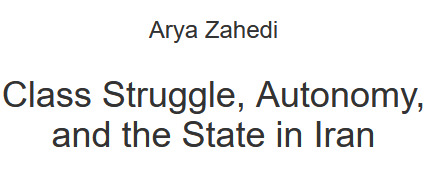
The Pahlavi Regime
The coup of February 1921 that brought General Reza Khan to power set into motion the creation of the modern centralized Iranian nation-state. The Pahlavi state should be seen alongside the other right-wing nationalist regimes that arose around this time in response to both the dissolutions brought about by WWI and the threat of the October Revolution. Reza Shah may be fruitfully compared to his contemporary in Turkey, Atatürk, as well as the models of authoritarian nationalist development seen in Germany, Italy, and Japan. As with these latter cases, the Pahlavi regime was “the product of a counter-attack by a weak capitalist class against a revolutionary movement, in a country that has slipped behind in the process of capitalist development. This class could only redress this position by repression and state-directed economic growth.”[10]
The political logic of this period can be summarized as state-building. Once the new government negotiated the withdrawal of Soviet and British troops, it moved to crush all remaining forms of opposition and centers of power. The powerful tribal armies were brought to heel, while autonomous and local powers, as well as rival officers in pursuit of power, were all crushed. A modern army capable of effectively asserting state power was assembled, followed soon after by nationwide conscription, government ID cards, the abolition of aristocratic titles, and the imposition of formal sur-names. Since the central pillars of the “new order” were a modern army and bureaucracy, the regime sought to extend the power of the state to all realms of society. Local languages were banned, and Persian was made the official language of the country. A modern educational system operating beyond the control of the clergy was established, and something similar was done with the courts, ushering in a modern legal system independent of the religious orders. Perhaps the most symbolic of these changes was the ban on the chador, which, alongside the rest of such reforms, provoked the ongoing ire of the clergy.[11]
Many reformists, and even some to their left, initially supported Reza Khan. Like the Lasalleans in support of Bismark, they thought that by supporting Reza Khan they could push through many of the reforms that ran into dead ends when employing exclusively democratic channels. In 1925, the Qajar Dynasty was abolished, but unlike Attaturk, who founded a republic, the following year he crowned himself Reza Shah Pahlavi and founded a new dynasty.[12] Reza Shah continued solidifying his rule with an iron fist. The regime promoted a chauvinistic nationalist ideology that appealed to the imperial glories of pre-Islamic Persia. The state in this period can be best summarized as a monarchical-military dictatorship.
While the environment was repressive, the industrialisation projects of this era increased the size and importance of the working class, within which communists organized successful union drives. This culminated in 1929, when a massive strike broke out at the Abadan oil refinery complex, which was under the ownership and control of the Anglo-Iranian Oil Company. The strike shook the ruling classes in both Iran and Britain, and served not only as a key event in the history of the working class movement in Iran, but also as a test for the state’s ability to maintain social order. The government responded with a great show of force, ratcheting up repression against communists. In 1931, a new law was enacted that criminalized the teaching and promotion of “communist” ideologies, banned trade unions, made striking illegal, and initiated a new wave of repression of socialist activists and intellectuals were imprisoned.[13]
Although the Pahlavi state enjoyed a degree of independence from the dominant classes, this also tended indirectly to facilitate the latter’s rule. Under both Pahlavi Shahs, it was through the state that capitalist development and industrialization took place. It was through the state that the modern capitalist class was consolidated and expanded, a fact that would remain no less true under the current day Islamic Republic. In many respects, it could be argued that both the Pahlavi regime and the Islamic Republic share features with the imperial state of Napoleon III after the coup of 1852: the latter built a state that was relatively autonomous from the ruling classes, yet which was in the end to the benefit of those classes as a whole, having “destroyed the political domination of the bourgeoisie only to preserve its social domination.”[14]
The reign of Reza Shah came to an end with World War Two. In the intervening years, the Iranian regime grew closer to the axis powers, particularly Germany, with whom it had affinities both political and ideological. The number of German advisors, engineers, and workers had increased greatly. When Germany invaded the Soviet Union in 1941, the Allies wanted to use Iran to send weapons from the Persian Gulf to the Russian front. When Reza Shah refused, the Allies promptly invaded and occupied the country. Reza Shah abdicated in favor of his young son, Muhammad Reza, and lived the rest of his life in exile.
The Allied invasion of 1941, which caused the fall of Reza Shah’s dictatorship, opened up a period of popular political mobilization and activity. Political prisoners were released, trade unions reconstituted themselves, and political parties began to come into shape. While the invasion caused the fall of Reza Shah, the Allies still maintained the state, particularly the monarchy and the military. The Allies would occupy Iran until after the end of the war, with once again the Soviets occupying the north and the British occupying the south. This is also the beginning of the American involvement in Iran, with a military mission sent to Iran to rebuild the army.
When the communist prisoners were released a core of them founded the Tudeh [masses] Party, which would be the official pro-Moscow communist party in Iran. The party had a democratic-populist platform and attracted many intellectuals and middle-class elements. It was also a major presence among the industrial working class, organizing what would be by the end of the decade the largest trade union confederation in the Middle East.
After the war, Iran would be the stage for the confrontation of many social struggles, as well as the first conflict of the cold war. In 1946, the Soviets continued to occupy the north after the agreed upon allied withdrawal. Two autonomous republics were founded in Mahabad and Azerbaijan under the protection of the Red Army. At the same time, a number of communists were included in the post-war coalition government. The Soviets withdrew their forces, and the imperial army moved in with great repression. The communists were also pushed from government, as would be the case with the fall of the coalition governments of France and Italy in 1947. This was the first victory of the new US-Iran military alliance that had begun during the war.
Following the Second World War, the movement for Iranian national independence experienced an upsurge, focused on the demand to nationalize Iranian oil. At the center of this surge was the National Front, led by Dr. Muhammad Mossadegh, who soon gained a mass following and was made Prime Minister in 1951. The National Front was not a party with a single ideology, but an alliance of various parties united around national independence through the oil question. When parliament voted to nationalize the oil industry, the British reacted immediately by imposing an economic blockade on Iran. The result was a great strain on the economy and a major increase in social tensions. The Tudeh Party was increasingly showing their strength. The United States feared that the uncertain situation would create an opportunity for Tudeh to seize power. This was the beginning of the successful coup by pro-Shah rightist military generals in 1953.[15]
The 1953 coup closed the door on the social movements that had opened up with WW2. The period that followed was one of severe repression. The coup would solidify the position of the Shah and the military against all rivals and competing sources of power. It also established the United States as the dominant imperialist power, supplanting the British. The main weight of the repression came against the communists in the Tudeh Party. The party’s network was rooted out and the trade union confederation destroyed. Many militants were imprisoned, executed, or went into exile. It was in order to facilitate this new order that the US helped the regime set up a new secret police force, the Organization for Information and Security of the Country, known commonly by its Persian acronym, SAVAK. Its name would come to be synonymous with repression and torture under the Shah’s dictatorship.
#pahlavi#pahlavi regime#iran#middle east#Anti-imperialism#history#Ill Will#insurrection#Class Struggle#Autonomy#anarchism#resistance#prison abolition#acab#jail#prisoners#autonomy#revolution#community building#practical anarchism#anarchist society#practical#practical anarchy#anarchy#daily posts#communism#anti capitalist#anti capitalism#late stage capitalism#organization
12 notes
·
View notes
Text
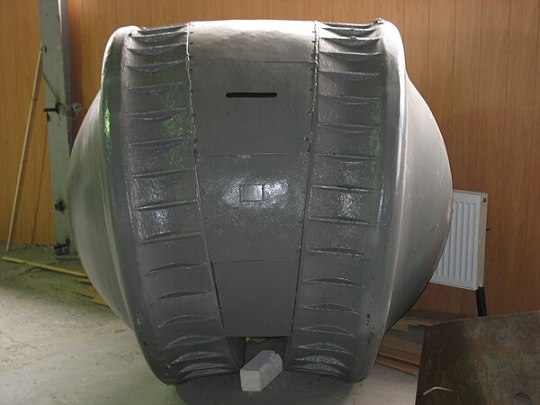
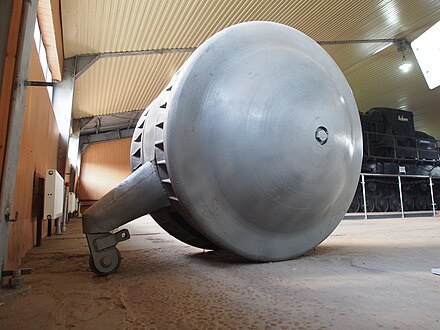
Here's a random history fact that made me laugh hard: The Kugelpanzer ("ball tank") is a one-man armoured vehicle built by Nazi Germany during World War II. The history of the vehicle is practically unknown other than the fact that at least one example was exported to the Empire of Japan and used by the Kwantung Army. The machine remains something of a mystery due to the lack of records and the incompleteness of the sole surviving model.
7 notes
·
View notes
Text
Neon Genesis Evangelion 08

Oh wow, it's Batman! Wait...

Let's get some details out of the way to start off. This episode is about Misato meeting up with a UN navy fleet to receive a new Evangelion model, Unit 02. I'm not sure why she brought Shinji along, though he does work for NERV, so I guess it tracks. What makes less sense is the way she invited Shinji's pals, Suzuhara and Big Rigg Mahoney. She teasingly refers to this as a "date", which gets them all flustered because they've got it bad for Misato, but Shinji isn't buying it and neither am I.
And... that's basically their whole role in the story. Shinji and Misato have a part to play, of course, but Suzuharu doesn't do much and Big Rigg Mahoney just goes apeshit about getting to videotape all this footage of real live aircraft carriers.
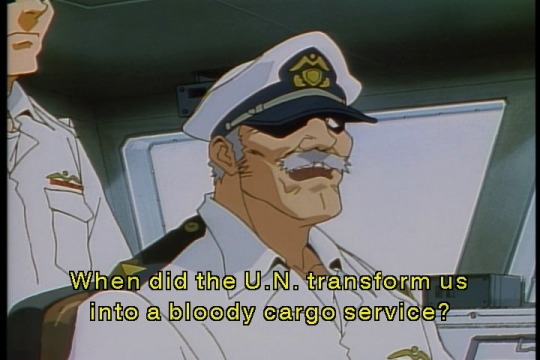
The gang board the carrier Over the Rainbow, which is supposed to be a vintage craft from before the Second Impact. The captain is in charge of the fleet, and he's under orders to bring Eva 02 to Japan, but he won't turn over the unit to Misato until they reach land. The sea is his jurisdiction, and he's got a bug up his ass about these newfangled giant robots and their teenage pilots.
This is one of the not-so-subtle themes of this show, where it's ostensibly another sentai action-adventure story with giant robots, except those shows usually handwave the part where it doesn't make much sense. A kid in a unitard might look cool piloting a giant robot, but how is that a better weapon than an aircraft carrier, which actually works in real life? And NGE offers a lot of technobabble to rationalize this, usually involving that "AT Field" that all the monsters have, but it never shakes the question entirely. That's because this show is all about questioning this premise. The Eva Units work just well enough to justify their existence, but they're still presented as highly dubious to a lot of people. So no matter how many times NERV saves the day, it still looks shady as hell to send inexperienced child soldiers into battle with experimental weapons.

But the captain, like Shinji's pals, really don't do much in this story. The real draw here is the introduction of Asuka Langely Sohryu, the second of the three Eva pilots. If I'm following this correctly, she's been in Germany this whole time training and working with the people who put the new Unit 02 together. A gust of wind blows her skirt up, and she slaps Suzuharu for looking.

She calls the slap an "admission fee", so Suzuharu pulls down his pants to show her his entire wang? The fuck? Asuka slaps him again, but I'm pretty sure that's not how this incident is supposed to end. Like, this is a navy ship. I feel like they'd stick you in the brig for something like this.

Also, there's this dude named Kaji, I think. I'm not looking it up because I'll catch another spoiler. He doesn't seem to matter anyway. He seems to be Asuka's mentor, at least up to this point, and he had some sort of past relationship with Misato, which she isn't interested in rekindling. Mostly he just makes things awkward.

As for Asuka, she seems to establish a one-sided rivarly with Shinji. She tells him he doesn't look like much, but she seems concerned to hear how well he syncs with Unit 01 with so little training. So she shows him Unit 02 and tells him how this is the culmination of the Evangelion research. Rei's Unit 00 was the prototype, and Shinji's 01 was the test model, but her 02 is the finished model, actually designed for combat.

But while Asuka's showing off, the fleet comes under attack, and everyone quickly decides it must be another Angel. Misato wonders if it specifically came here to intercept Unit 02. And maybe she's onto something, but maybe not...
She tries to use her NERV authority to take charge of the situation, but the captain won't have it, and he orders his fleet to fire on the Angel. This is useless, as we've already seen in every other Angel attack so far. Hell, the Evas have struggled to beat these things.

However, Asuka has taken matters into her own hands. She's decided to launch Unit 02 herself and defeat the Angel without waiting for Misato's orders.
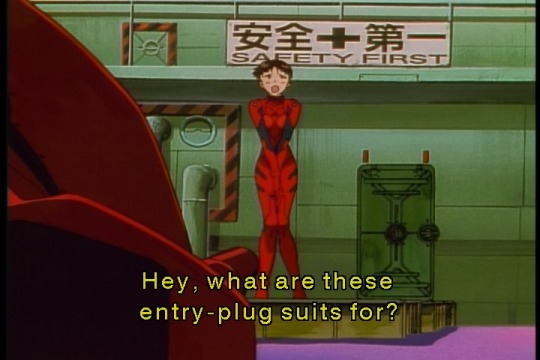
What I don't understand is why she insists on having Shinji join her. She even makes him wear her spare plugsuit, which he finds embarassing because it makes him look like a girl. Wait... these things are padded?

I just assumed these suits were basically skintight outfits. There's a whole thing where you put them on and then press a button and they sort of shrink onto your body. Except Shinji's got boobs now, where he didn't have 'em before. And his hips looked kind of different too. The implication here is that the plugsuits are designed to make you look more shapely than you actually are.
And that would explain why Asuka and Rei look a lot older in their suits than they do in their civilian clothes. The suits are padded to make them look less like eighth graders. And that probably goes for Shinji as well, but we haven't seen much of him in his plugsuit.
I'm not sure what this means. Maybe they were just going for a gag in this one episode, where Shinji is embarassed to wear a girl's uniform. But I feel like this runs deeper. For some reason, NERV requires fourteen-year-olds to pilot these things, but someone at NERV must have decided that it would make things easier for them if the pilots didn't look fourteen. I mean, there's only so much you can do with padded suits, but if you can "age up" these kids to make them look sixteen, it's a little less upsetting to send them off to war, right?
That's really fucked up. What makes it even more fucked up is that it's not just NERV's costume department trying to massage public relations. No, it's all the sexualized imagery we see of these characters in the real world. Asuka and Rei are staples of the sexy cosplay scene. The sexy fanart scene. The sexy collectable figurine scene. Whatever. Because you can kind of pass them off as looking like adult women, at least while they're wearing the plugsuits. Except it's just padding, and cartoon padding at that. NERV's propaganda is so insidious that it bled over into the real world.
Then again, I'm probably giving this too much credit.
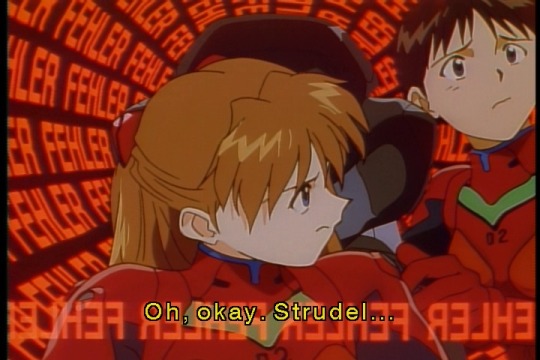
Anyway, Unit 02 doesn't work properly at first because it's interfacing with both pilots, and it's been set for German, but Shinji thinks in Japanese. Asuka's all annoyed with him for interfering with her plan, except it was her dumb idea to bring him along. So she switches to Japanese and they're ready to go.
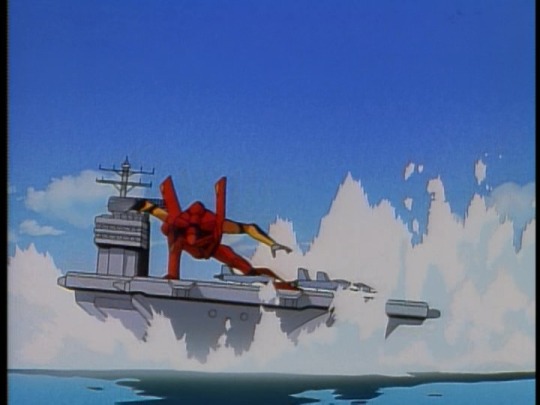
So she gets it operational, and Misato's thrilled since the captain won't recognize her authority, so this just simplifies matters. The only problem is that Unit 02 only has a minute of battery life, so Asuka has to jump from one ship to another to get to the one with the power cable she needs for power.

Wait, scratch that. The problem is that even after plugging in the power cable, the Eva still doesn't have all of its weapons, and the Angel drags it underwater, where the weapons it does have are ineffective. So Asuka's plan turned out to be half-baked. Luckily, Misato comes up with a way to salvage the situation.
Okay, so the Angel has the Eva in its jaws, and the Eva is tethered to the ship by its power cable. You would think that the Angel could just snap the cable, or drag the ship underwater. I mean, it's pretty big. But instead it seems like some sort of stalemate. So Misato suggests scuttling two of the ships damaged in the battle, and moving them towards the Angel. As it attacks, Unit 02 will pry open its mouth, and then the two ships will open fire on its core, which is located down its throat. This will destroy it.
I don't understand how this is supposed to work. The Angels are impervious to conventional weapons, so why are they suddenly useful now? And if Unit 02 can free itself, why doesn't it just get back on the boat where its weapons will be effective?

Well, it works at any rate, although the only reason Unit 02 escapes is because Asuka and Shinji handle the controls together, and their concerted thoughts prove to be more effective than either of them operating the Eva separately. Why would that make the Eva stronger? I could understand if the movements it had to do were complex, requiring more precise control, but all they need to do is push the jaws apart, which seems like a pretty straightforward command.

You might be wondering what Kaji was doing during all of this. Well, he buggered off in the middle of the battle, saying he had to make a delivery.
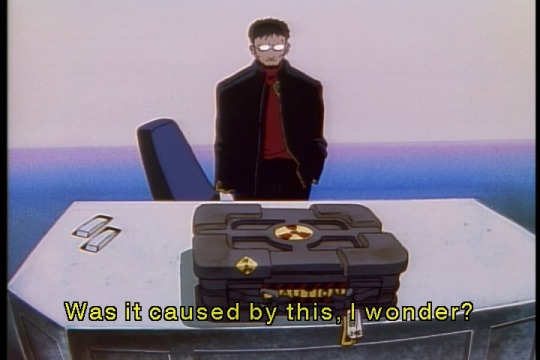
And after all the fighting is over, we find out he was bringing this box to Gendo Ikari at NERV headquarters. Apparently the UN fleet was carrying this as well, and Kaji's job was to get it to Ikari.

It's... an embryo or something. Kaji calls it the "keystone of the Human Instrumentality Project", and Ikari agrees, but he calls it "Adam". I don't know what any of this means, but this case reminds me of Nuclear Man's origin in Superman IV: The Quest for Peace, so I'm all for that.

Back home, Shinji's pals reflect on the adventure and Suzuharu is relieved he doesn't have to see Asuka again, but then she shows up as their new classmate and he's all shocked. Dude, what did you think would happen?
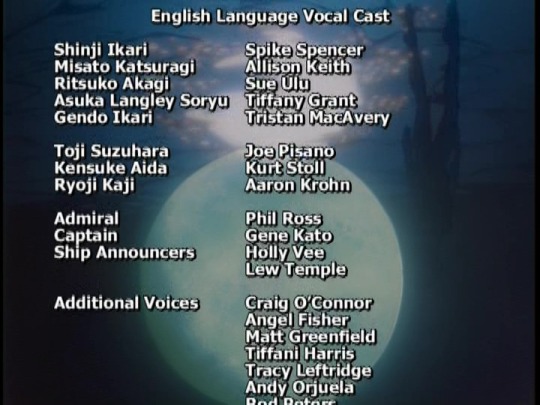
And yeah, I think that covers it.
Judging from the next episode preview, NERV seems to be aiming to build on the success of Shinji and Asuka working together, so we'll see where that leads. Did they just forget about Rei, though? Isn't there an episode where they all go out for tacos? I'm pretty sure that's a real episode.
#neon genesis evangelion#2024ngeliveblog#shinji ikari#misato katsuragi#toji suzuhara#big rigg mahoney#gendo ikari#ryoji kaji#asuka langley soryu
8 notes
·
View notes
Note
Peronism is only particularly weird because Peron himself was basically just a fascist, it’s just that he wasn’t really able to govern as one because he was swept to power on the back of a worker’s movement and ended up fulfilling the tasks of anti communist social democracy
This is valid as a quick analysis, but as always, there is more nuance. I will try to add more, not in defense of Perón himself, but as for more context on this.
You are correct in the fact that it was Perón who was swept into power by the workers and not viceversa. In October 18 1945, it was the workers by themselves who marched to free Perón and eventually supported his goverments in the ballots and in the streets. One of the idiosyncracies of Peronism is its strong personalism, but I have always believed it's an inverted personalism, if that makes sense, where the popular movement projects and focuses its efforts on the figures of Perón, Evita and those who followed. If anything, Perón's rather convoluted ideological bases and poor decisions did not make for a coherent movement on itself, it was expressed in the collective movement of Peronism.
I will not attempt to argue that Perón wasn't inspired by or even admired Italian and Spanish Fascism. But he was not unique in the historical context of trying to create a "third position" between capitalism and communism. The difference between Peronism and Fascism, and the reason I think the two aren't the same or even really comparable, is that while Fascism emerged from war resentment and racial nationalism (Germany) the desire for colonial expansion and imperialism (Japan) or both (Italy), Peronism emerged from another perspective: from the anti-imperialist sentiment of a country controlled by foreign interests and an oligarchy that enforced the old colonial mindset (eurocentrism and racism, extractivism and the agro-exporter model, worker opression)
Contrary to the popular neoliberal vision of events, Argentina in the 30-40s was not a rich country; it was only for the oligarchy. Like everywhere else in the world, revolutionary movements were brewing; communism, but also fascism (as in extremist catholic and outright nazi movments), anarchism, and of course, the military arm enforcing conservative interests after failed attempts at reform by the UCR (who once were socialists, belive it or not). The Argentine working class was looking for someone to represent their interests after a century (centuries, if we count pre-independence). Peronism evolved in this context.
But why Perón and Peronism? Why not any of those other movements? Well, let's see the mindset of an average Argentine worker at the time. Many were deeply Catholic (worth noting that Peronism also included Jews and Muslims), and concerned about "atheist communism", which, you might dislike the figure of speech, but it was one of the main impressions of communism at the time. They were also, for the most part, discriminated by the oligarchy, either for their status of indigenous and african descent or as recent inmigrants, so they didn't sympathize with nazism or the ultra-catholic right either. Worker unions and movements were active in Argentina, but the years of dicatorship and previous unfriendly and ineffective goverments had undermined their power.
In this context, appears Perón, someone who supports unions, social justice and the development of the country, and whose movement for the first time tries to integrate and support the discriminated underclasses. He is considered both a patriot who stands up against foreign interests, but also someone who stands up to the oligarchic landowners. Not only that, but he has enough cred and power to actually enact what he does.
But this can't be done without the support of an organized popular movement, which the people provide again and again. And thus, Peronism arises.
Now, this all sounds rather counterproducent to socialism and communism, and it indeed it was, especially in Perón's later years, as the movement shattered between the far-right and the far left. Peronism is in many Argentina's version of social democracy, shaped by a violent, convoluted country and it fullfiled the same niche as in other countries: to prevent a violent revolution by conceding rights and benefits to the worker class. Only that in Argentina's complex history, it took a rather unique bent. Even today, it is undeniable that Argentina's working class and the core supporters of "the left" in other countries, in Argentina are peronists or sympathize with peronism, which has of now been identified with the left wing (but that's for another post).
Would have Argentina turned to revolutionary communism without peronism? Difficult to say. If it wasn't Perón, it might have been an actual fascist or ultra-catholic that might have taken power. It could have been a communist revolution, true, but it also could have been repressed in the cycle of military coups and weak democracies. I love alternate history, but it all would have depended on a lot of things one can't explore meaningfully. You can't change what has happened, in any case.
However, what does this mean for the future of socialism and communism in Argentina? Like I said, it is an historical and current fact that the Argentine worker class and unions sympathize by the most part with Peronism. The construction of any socialist or communism movement must deal with that fact, inevitably. How to do it? Well, se los dejo como tarea para la casa.
23 notes
·
View notes